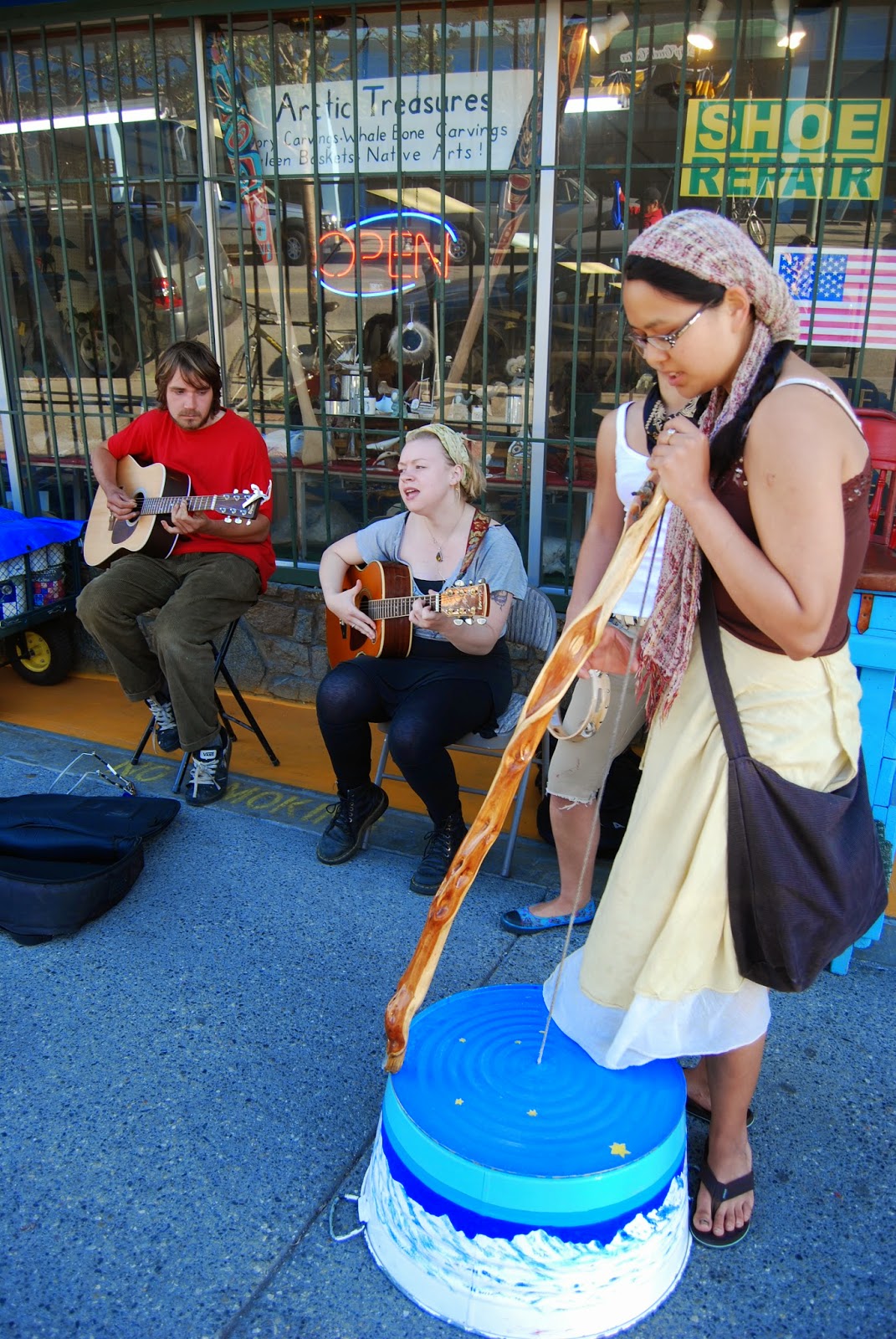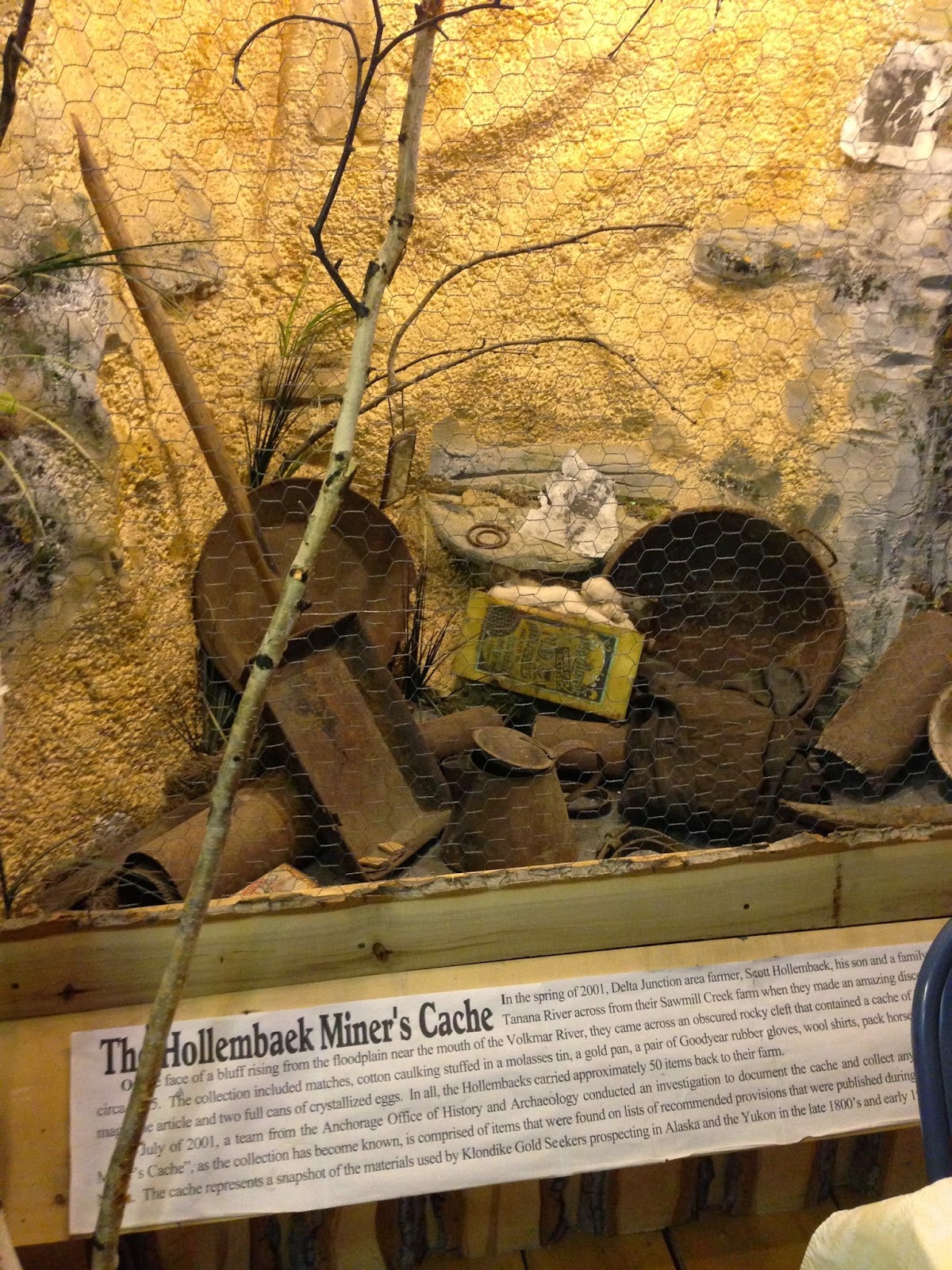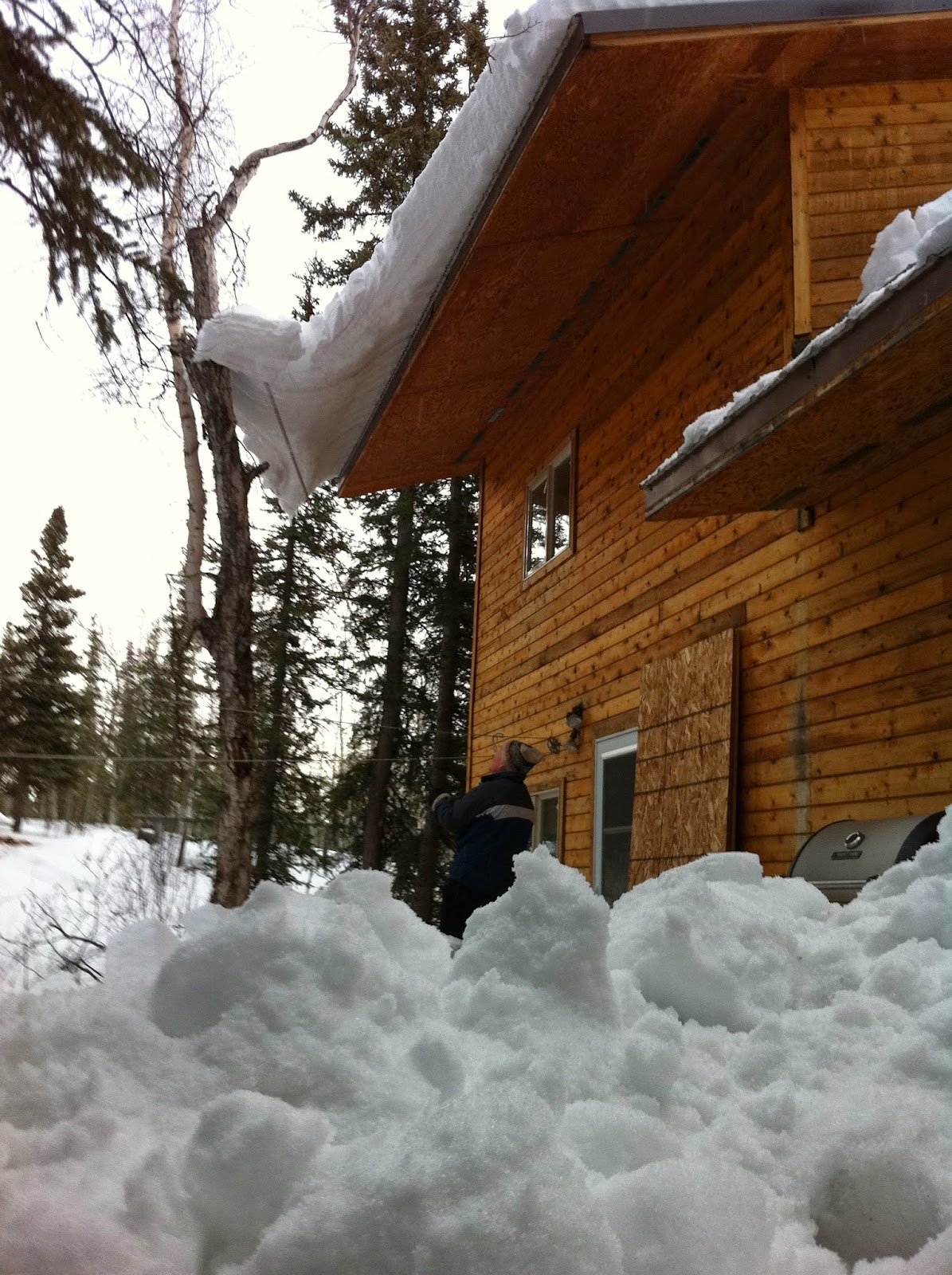What To Do In Denali National Park On A Very Tight Schedule
The train station is about a four minute walk from the main Denali National Park Visitor Center, a bookshop, and a small restaurant/cafeteria.
 |
| Train arrives at Denali National Park |
At the Visitor Center, you'll meet rangers who can give you an idea of what to do. Three hours isn't much time, so you'll have to plan carefully.
Your best bet would be to first ask the rangers if there is an upcoming walk departing the Visitor Center. I assume you would be arriving at 12:30.
They may have a scheduled walk at 1:00 pm that day. It's probably a good idea to ask on the spot, or call ahead in the summer. (The official Denali Park Switchboard is 907-683-9532.) There are 2 to 2.5 hour ranger led walks on gravel and paved trails around the park entrance every day.
 |
| Inside the official Denali Park Visitor Center |
Another thing you could do is take a free shuttle bus to the free sled dog kennels about 1 mile up the road. These leave the Visitor Center frequently.
Not surprisingly, if you are on a train and going to get back on, there will probably be quite a few people sharing your schedule, so the rangers will tell you what to do in that short amount of time because they are used to the question. If you don't want to be a line at the visitor center, hightail in front of your train crowd to the Visitor Center before everybody else on the train gets there.
If you want to ride a shuttle to the entrance of the Park Road, you can get your photo taken by the Welcome To Denali sign, which is always a classic. From there, you could walk to the Nenana River, which is about 20 minutes away on paved trail. That's pretty scenic, but make sure you have enough time to walk back, or can catch a shuttle back to the train.
In the long and short, with not that much time, and no car, it will be pretty hard for you to do a whole bunch of things. You'll have to pick one or two things.
 |
| The Denali Park Visitor Center |
Some people might take a shuttle van (private) to the area known as the Entrance Area. It's about 1 mile from the park, and a private piece of land with a lot of hotels, gift shops, and restaurants, and a boardwalk
So, probably some combination of
A) Visiting visitor centers near the train station (Denali Visitor Center, Murie Science and Learning Center) and either
B) Going on a shuttle bus trip to the kennels, Entrance Area, private tour or
C) Going on a ranger-led walk.
There are a lot of videos and displays in the Visitor Centers, so you can see these after you've done what you want to do and are waiting for the train.
Again, rangers might have more ideas, but the time limit is fairly short.
There is also the possibility of a commercial tour from the train, but in that short amount of time you might be only be looking at Helicopter Flightseeing with Era Helicopters, or a private tour of Husky Homestead, Iditarod Racer's Jeff King's Kennel. (Not to be confused with the park dog kennels.)
Raft trips tend to be at least four hours.






















.tif)





















